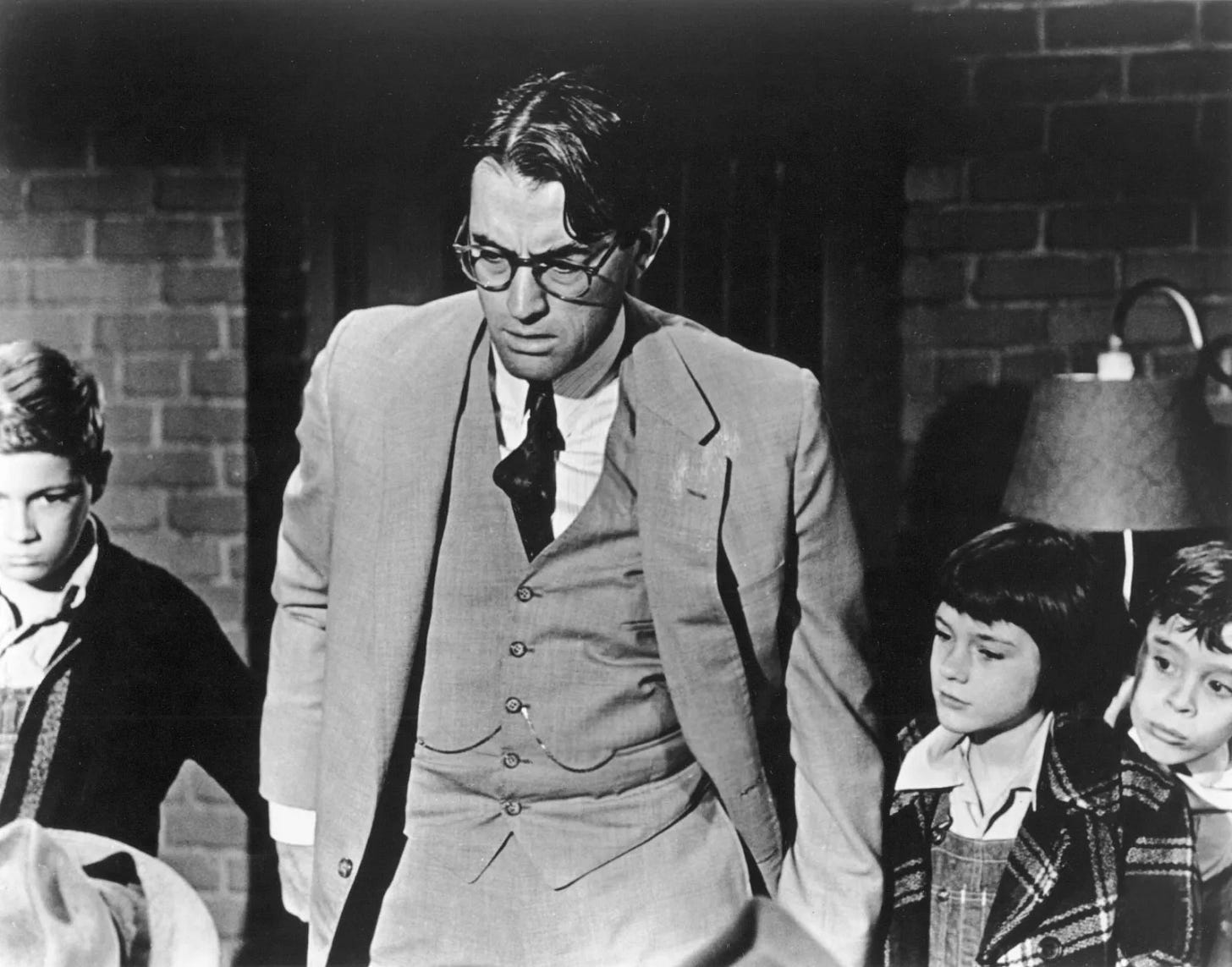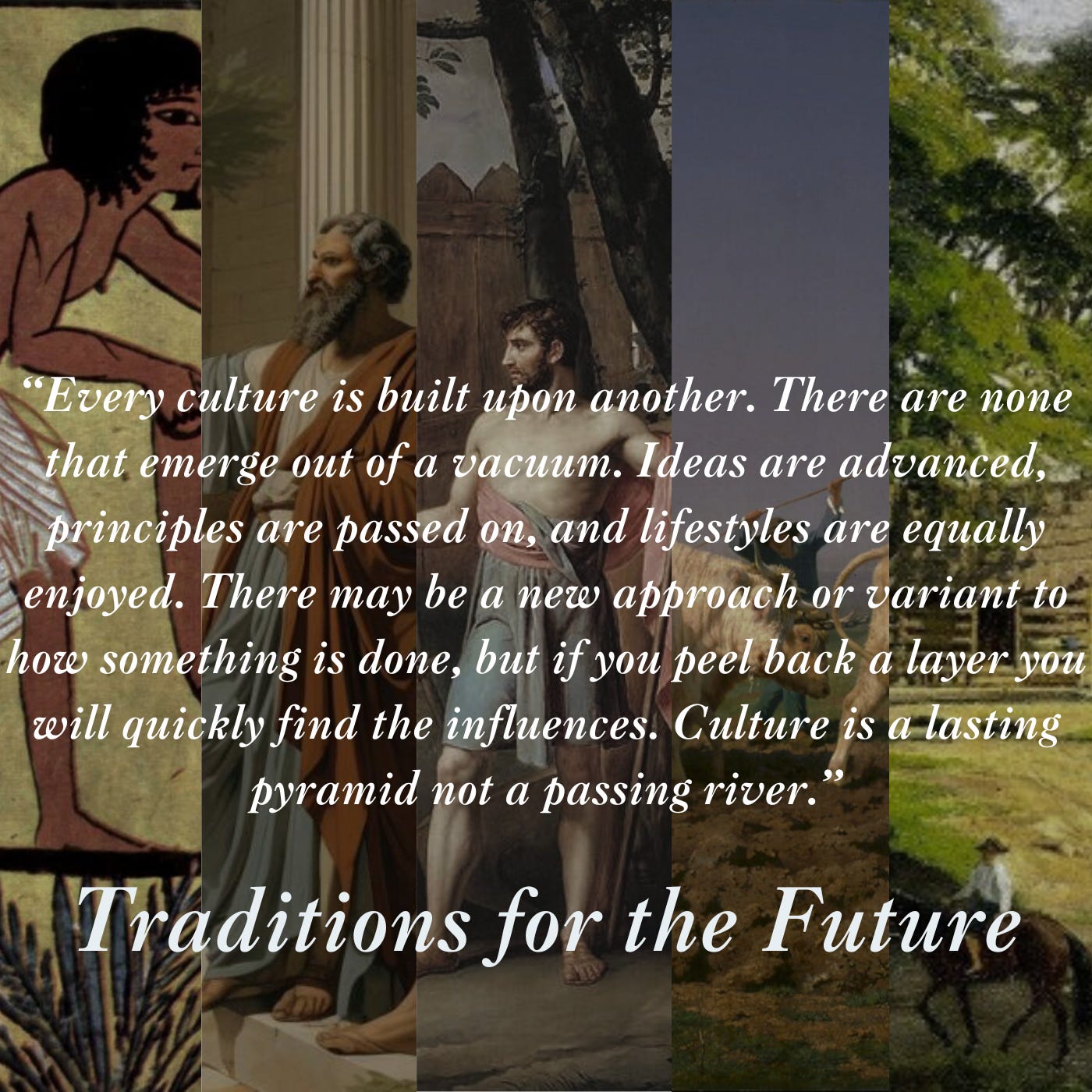The South Is a Mockingbird
A Deeper Look At Harper Lee's Novel
“The Maycomb County courthouse was faintly reminiscent of Arlington in one respect: the concrete pillars supporting its south roof were too heavy for their light burden. The pillars were all that remained standing when the original courthouse burned in 1856. Another courthouse was built around them. It is better to say, built in spite of them. But for the south porch, the Maycomb County courthouse was early Victorian, presenting an unoffensive vista when Greek revival columns clashed with a big nineteenth-century clock tower indicating a people determined to preserve every physical scrap of the past.”1
Mockingbirds are unique birds. Unlike others, they don’t make their own songs, they only mimic. Imitation is their game and they play no other. The sounds they pass along are pleasant to their own ears, and so they mimic.
It is only upon through another read through To Kill a Mockingbird a deeper meaning of the novel has become plain.
Every culture is built upon another. There are none that emerge out of a vacuum. Ideas are advanced, principles are passed on, and lifestyles are equally enjoyed. There may be a new approach or variant to how something is done, but if you peel back a layer you will quickly find the influences. Culture is a lasting pyramid not a passing river.
History proves that this is true. The seeds of the South were sown in Egypt’s past. That groundbreaking civilization was the first large scale culture built upon an agrarian base. This principle appealed to their trading partner, Greece, as they implemented it into their leisurely lifestyle. Then came the conquerors of the Greeks, the Romans, who embraced more heartily the love of agriculture and carried their philosophy back home.
Under the Romans agriculture was advanced and philosophy expanded. And when the barbarians came and toppled Rome, they could not conquer the ideas of politics and justice that had already traveled well on the Roman roads into Europe. Here the ideas were passed on faithfully for over a millennia and did not waver far from the source. The Anglon-Saxons were the keepers of the old ways. But those old things spread when Britons, Scots, and Frenchmen crossed oceans to settle in the American South.
Even in the 1930s American South, remnants of Greek and Roman influences still remained. In the compilation of essays, I’ll Take My Stand: The South and the Agrarian Tradition, Frank Lawrence Owsley writes,
“The people whom they loved most in the ancient world were the Greeks and the Romans of the early republic. The Greeks did not appeal to them as much as did the Romans…But the even-poised and leisurely life of the Greeks, their oratory, their philosophy, their art—especially their architecture—appealed to the South. The Greek tradition became partly grafted upon the Anglo-Saxon and Scotch tradition of life. However, it was the Romans of the early republic…who appealed most powerfully to the South…They could build log houses and were closer to many Southerners than even the English gentleman in his moss-covered stone house.”2
To Kill a Mockingbird is a novel about culture, and with it being a novel about culture it is ultimately a novel about imitation. This can be seen in the novel’s constant references to birds and ancient Western cultures. The protagonists, the Finches, and the accused Tom Robinson, are the only family names explicitly linked to birds. Atticus’ name is in reference to the best friend of the Roman senator, Cicero. They were opposed to the dictatorship of Julius Caesar, and were subsequently killed in the tumultuous aftermath of his assassination. Atticus’ sister, Alexandra, her name refers to the great ancient Greek city. Calpurnia, the Finches’ maid, is named after Julius Caesar’s wife. Additionally, Jem imitates the ancient Egyptians when he walks home from school one day, and says, “Where would we be today if they hadn’t?”3
The great imitation is at the climax: the trial. The Old South stood upon the shoulders of Rome in principle and way of life, and the New South embraced barbarity. The Finches and Robinsons were the remaining few of the old order, and stood opposed to the Ewells and their white trash. Justice, decency, and respect were in the crosshairs. It was a matter of principle, which, if neglected, Atticus declared would prevent him from being able to “hold up [his] head in town”.4 If the case was lost, a manner would be as well.
Preceding the trial, the buildup is full of taunting and scoffing from those in the town, leading to the attempted lynching of Tom Robinson. On that evening when some men are standing outside of the Finches’ house coming to warn Atticus, Jem is reading the speeches of Henry W. Grady, who famously coined the term “New South”.5 Outside the jailhouse, Atticus standing up to the mob was representative of the Old Way doing what is right no matter how outnumbered.
As for the trial itself, it has the feel of a modern day Colosseum. Teeming with its drama and spectators, it hearkens back to an ancient form of entertainment: someone’s fate in use of sport, only this was the fate of them all. This decision would either be in favor of the way of life known by all in the room or in favor of the new way, full of turbulent malice. The screeching of the Ewells was repugnant and did not stand a chance against the wisdom of Atticus. The courtroom, the judge, the jury were all swayed by him until Tom Robinson said that he felt sorry for a poor white woman such as Mayella Ewell. Everything that the courthouse stood for, the Greek and Roman ideals, were abandoned in that moment. Atticus, like a good Roman, made his final appeal to the legal system, declaring it “the great leveler” and that “in our courts all men are created equal.”6
But the jury began to mimic the word of the day, “Crucify him! Crucify him!”, and so was the demise of Tom Robinson. The Ewells (which sounds like Owls) were given their prey of finches and robins. The courthouse was now under a new regime.
Out of innocence comes sickness. Dill had to be taken out by Scout as he became overwhelmed by the prosecutor’s questions and manner. He comes to tears over this:
“I don’t care one speck. It ain’t right, somehow it ain’t right to do ‘em that way. Hasn’t anybody got any business talking like that—it just makes me sick.”7
In this moment outside on the steps of the courthouse they encounter Mr. Dolphus Raymond, the town’s supposed drunk and only white man married to a black woman who fathered several children with her. In his offering a quick sip to Dill they learn that he in fact does not drink, and only acts it around town. But why? As he says,
“Well, it’s very simple. Some folks don’t—like the way I live…Secretly, Miss Finch, I’m not much of a drinker, but you see they could never, never understand that I live like I do because that’s the way I want to live.”8
As the town’s outcast, he makes a more important remark:
“Miss Jean Louise, you don’t know your pa’s not a run-of-the-mill man, it’ll take a few years for that to sink in—you haven’t seen enough of the world yet. You haven’t even seen this town, but all you gotta do is step back inside the courthouse.”9
The crowd versus the man. The homogenous versus the exception.
The South is a mockingbird. She imitates old songs. Like Rome, her ultimate downfall did not come from outside invaders but through the inward corruption of her people.
Yes, it was beaten down by war, but it was killed by the New South, who abandoned her ways. The only means for her to be revived is for her to imitate. The way of any society is to be a mockingbird, but when this one sings it raises one of the most beautiful of carols.
Page 185. To Kill a Mockingbird by Harper Lee. Originally published 1960. Edition for Barnes & Noble, Inc., by HarperCollins Publishers in 2011.
Page 70. “The Irrepressible Conflict” by Frank Lawrence Owsley. I’ll Take My Stand: The South and the Agrarian Tradition. Originally published 1930. Louisiana Paperback Edition. 1977.
Page 67. To Kill a Mockingbird by Harper Lee. Originally published 1960. Edition for Barnes & Noble, Inc., by HarperCollins Publishers in 2011.
Page 86. Ibid.
Page 166. Ibid.
Page 234. Ibid.
Page 227. Ibid.
Page 229. Ibid.
Page 229. Ibid.






